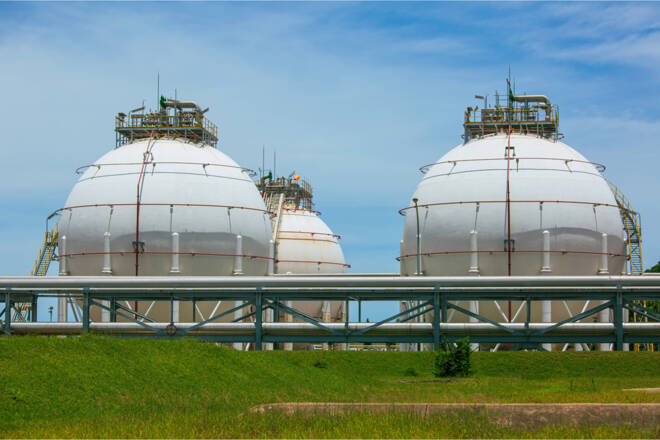Advertisement
Advertisement
Natural Gas Forecast: Weaker Amid Storage Concerns and Demand Forecasts
By:
Warmer forecasts and weak wind generation initially boosted natural gas prices, but storage builds and decreased demand forecasts limited the rally.
Natural Gas Highlights
- Supportive factors include warmer forecast trends, weak wind generation.
- Storage builds and reduced demand forecasts limit the rally
- Alberta oil and gas production resumes, while gas rig counts decline
Natural Gas Overview
Natural gas futures experienced a downward trend following an unsuccessful attempt at sustaining an early rally. The rally was limited despite supportive fundamental factors. These factors included warmer forecast trends and weak wind generation in the ERCOT territory. Additionally, declining production and technical support contributed to the rally. However, anticipated storage builds and decreased demand forecasts posed limitations.
At 13:34 GMT, Natural Gas is trading $2.261, down $0.014 or -0.59%. The United States Natural Gas Fund ETF (UNG) is at $6.78, down $0.08 -1.17%.
Multiple Factors Propel Natural Gas Rally
The early rally in natural gas futures was driven by various supportive factors. These included warmer forecast trends, which typically increase demand for cooling and consequently raise natural gas consumption. Additionally, the weak wind generation in the ERCOT territory boosted the need for alternative energy sources like natural gas. Furthermore, declining production and technical support also contributed to the initial strength in prices. An analyst cited these factors as supportive of higher prices in Wednesday’s session.
Natural Gas Stifled by Supply, Demand Concerns
Despite the initial strength, several factors restrained the upside potential of natural gas futures. Forecasts predicted significant storage builds in the upcoming weeks, which indicated an oversupply situation. Moreover, expectations of reduced demand in the following week offset the support generated by the anticipated decline in production. Traders expressed concerns about the rally’s resumption. They believed that it hinged on the demand side of the market. They expected a more significant offset against recent supply-side developments. Specifically, they were concerned about the reported plunge in gas rig counts.
Alberta’s Oil Production Rebounds
In Alberta, oil and gas companies restarted production after wildfire-related curtailments. This signaled a positive development and a potential turning point. Baker Hughes Co reported a decrease in the gas rig count, reaching its lowest level since April 2022. These factors suggested a possible market bottoming out. However, concerns remained due to the perception of continued oversupply throughout the summer.
US Gas Output Steady, Demand Declines
Data provider Refinitiv revealed that average gas output in the Lower 48 states of the US stood at 101.5 bcfd. Forecasts indicated a decline in U.S. gas demand, including exports, from 92.0 bcfd to 89.0 bcfd over the next week. These numbers reflected a complex interplay between supply and demand, with oversupply concerns still exerting downward pressure on prices.
Weather Shift Threatens Demand
Meteorologists projected a shift in weather patterns across the Lower 48 states of the United States. After a period of warmer-than-normal levels from May 12-17, the weather was expected to normalize from May 18-27. This change could impact natural gas demand as temperature fluctuations influence heating and cooling requirements.
Technical Analysis
Natural gas is hovering near a two-week high. It’s also on the bullish side of the daily pivot at $2.168 on Wednesday.
Its current chart pattern has put it in a position to test the next target level at $2.432 (R1). This could act like resistance on the first test. However, it’s also a potential triggerpoint for an acceleration to the upside with $2.638 (R2) the next target.
| S1 – $1.962 | R1 – $2.432 |
| S2 – $1.698 | R2 – $2.638 |
| S3 – $1.286 | R3 – $2.902 |
About the Author
James Hyerczykauthor
James Hyerczyk is a U.S. based seasoned technical analyst and educator with over 40 years of experience in market analysis and trading, specializing in chart patterns and price movement. He is the author of two books on technical analysis and has a background in both futures and stock markets.
Advertisement
